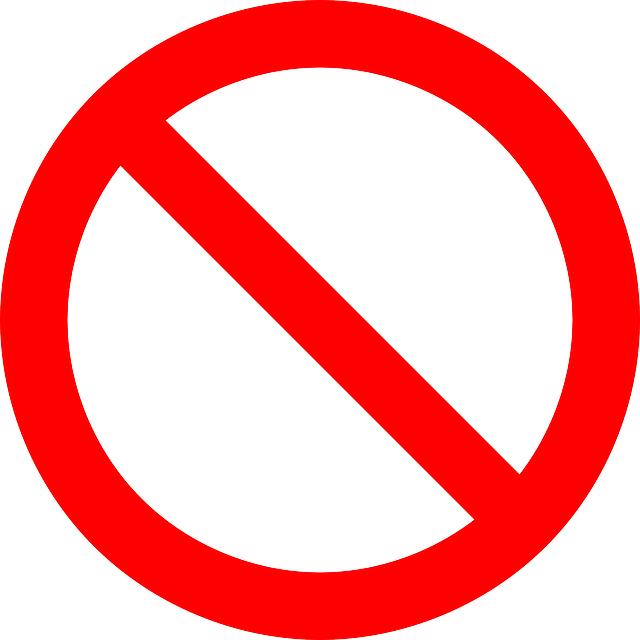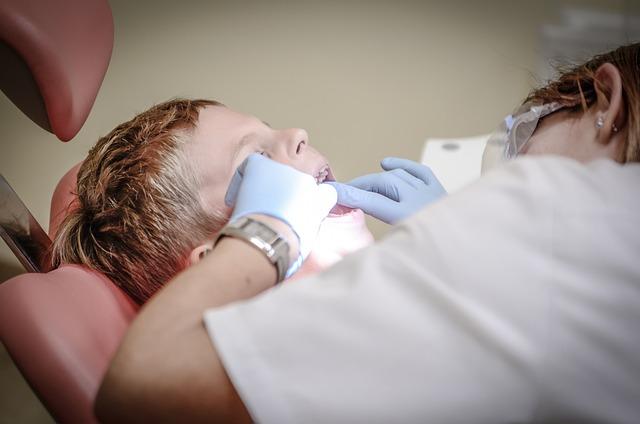Tooth Numbers and Names Explained: A Comprehensive Guide
Welcome to a comprehensive guide that will unravel the mystery behind tooth numbers and names. Have you ever found yourself staring at a dental chart, utterly perplexed by the seemingly random combination of numbers and letters? Fear not, for we are here to shed light on this dental jargon and equip you with the knowledge to decipher these codes confidently. In this article, we will demystify tooth numbering systems used by dental professionals worldwide, ensuring that you never feel lost in the world of dentistry again. So, let’s embark on a journey of dental enlightenment and unravel the secrets behind tooth numbers and names.
1. Understanding Dental Anatomy: An Introduction to Tooth Numbers and Names
In order to fully understand dental anatomy, it is crucial to become familiar with tooth numbers and names. This knowledge serves as the foundation for effective dental communication and treatment planning. Each tooth in the mouth is assigned a specific number and name, allowing for easy identification and reference.
Tooth numbers are commonly used in dental charts and records, as well as during discussions between dental professionals. The numbering system follows a universal pattern, with each quadrant of the mouth assigned a number from 1 to 4, starting from the upper right and moving clockwise. Within each quadrant, the teeth are numbered from 1 to 8, with 1 being the most posterior tooth and 8 being the most anterior.
Beyond numbers, teeth are also identified by their specific names. The names are based on their location and function in the mouth. For example, the front teeth in the upper and lower jaws are called incisors, while the sharp, pointed teeth next to the incisors are known as canines. The premolars and molars are found in the back of the mouth and are responsible for grinding and chewing food.
By understanding the tooth numbering system and names, patients can better communicate with their dentist and comprehend dental procedures. Dental professionals can efficiently discuss treatment plans, identify problem areas, and accurately record dental findings. This knowledge empowers individuals to take an active role in their oral health and make informed decisions regarding their dental care.

2. Decoding the Dental Chart: A Step-by-Step Guide to Tooth Numbering Systems
Understanding tooth numbering systems is essential for dental professionals and patients alike. In this comprehensive guide, we will walk you through the step-by-step process of decoding dental charts, allowing you to gain a deeper understanding of the different tooth numbering systems used in dentistry.
Firstly, it’s important to note that there are two commonly used tooth numbering systems: the Universal Numbering System and the Palmer Notation Method. Each system has its advantages and is widely used in different parts of the world.
In the Universal Numbering System, each tooth is assigned a unique number, starting from the upper right third molar (tooth number 1) and moving clockwise around the mouth. This system is widely used in the United States and provides a straightforward way of identifying each tooth.
On the other hand, the Palmer Notation Method uses a combination of numbers and symbols to represent each tooth. With this system, the mouth is divided into four quadrants, and each tooth is assigned a number according to its location within the quadrant. This method is commonly used in European countries and provides a more detailed representation of the mouth.
By familiarizing yourself with both tooth numbering systems, you will be better equipped to communicate with dental professionals, understand treatment plans, and track your dental health. So, let’s dive into the intricacies of decoding dental charts and unravel the mysteries of tooth numbering!

3. The Universal Numbering System: Simplifying Tooth Identification Worldwide
The Universal Numbering System is a revolutionary method that aims to simplify tooth identification worldwide. Developed by the American Dental Association (ADA), it provides a standardized way of numbering teeth, eliminating the confusion caused by different systems used in different countries.
One of the key benefits of the Universal Numbering System is its simplicity. It uses a two-digit code to identify each tooth, with the first digit representing the quadrant and the second digit indicating the specific tooth within that quadrant. This makes it easy for dentists and dental professionals to communicate and understand tooth positions, regardless of their location or native numbering system.
With the Universal Numbering System, dental professionals can quickly and accurately identify teeth during examinations, treatment planning, and record keeping. This system is widely recognized and adopted globally, ensuring seamless communication and collaboration among dental professionals worldwide. By standardizing tooth identification, the Universal Numbering System enhances efficiency and accuracy in dental practice, ultimately benefiting both providers and patients.

4. The Palmer Notation Method: A Unique Approach to Dental Tooth Labeling
The Palmer Notation Method is an innovative and distinctive approach to labeling teeth in dentistry. Unlike traditional methods, such as the Universal Numbering System, the Palmer Notation Method uses a unique set of symbols and numbers to identify each tooth in the mouth. This system was developed by Dr. Leroy M. Palmer in the early 1900s and has since gained recognition for its simplicity and accuracy.
One of the key features of the Palmer Notation Method is its utilization of uppercase and lowercase letters to represent the four quadrants of the mouth. The uppercase letters (A, B, C, D) denote the permanent teeth in the maxillary arch (upper jaw), while the lowercase letters (a, b, c, d) represent the permanent teeth in the mandibular arch (lower jaw). This clear distinction allows for easy identification of teeth in different parts of the mouth.
Additionally, the Palmer Notation Method employs a combination of numbers and symbols to indicate the specific tooth within each quadrant. The numbers 1-8 represent the permanent teeth in each quadrant, starting from the central incisor (1) to the third molar (8). To further enhance clarity, a series of symbols, such as ‘+’, ‘⁵’, and ’⁶’, are used to denote specific variations or anomalies in tooth morphology.
In summary, the Palmer Notation Method offers a unique and efficient way to label teeth in dentistry. Its combination of letters, numbers, and symbols allows for easy communication and understanding among dental professionals. Whether you’re a dentist, dental student, or patient, familiarizing yourself with this method can greatly enhance your dental knowledge and facilitate effective communication with your dental care team.
5. Unraveling the FDI Tooth Numbering System: A Global Perspective on Dental Identification
The FDI Tooth Numbering System is a standardized method used worldwide to identify and label teeth. This system was developed by the FDI World Dental Federation and is widely recognized by dental professionals globally. Understanding this numbering system is crucial for accurate dental identification and effective communication among dental professionals.
The FDI Tooth Numbering System consists of a two-digit code for each tooth, with the first digit representing the quadrant of the mouth and the second digit indicating the specific tooth within that quadrant. The mouth is divided into four quadrants: the upper right (quadrant 1), upper left (quadrant 2), lower left (quadrant 3), and lower right (quadrant 4). Each quadrant is further divided into eight teeth, numbered from 1 to 8, starting from the central incisor to the third molar.
This standardized system allows dental professionals to easily communicate tooth locations and treatments, regardless of language or geographical location. It is particularly useful for international collaboration, research, and forensic identification. By unraveling the FDI Tooth Numbering System, dental professionals can ensure accurate and efficient dental identification on a global scale.
6. Primary Teeth and Their Numbering: Navigating the World of Baby Teeth
Primary teeth, also known as baby teeth, play a crucial role in a child’s oral development. Understanding their numbering system is essential for parents and caregivers to promote good dental hygiene and track the growth of their child’s teeth. Here’s a comprehensive guide to navigating the world of primary teeth:
1. The numbering system: Primary teeth are numbered using a universal system known as the Palmer notation method. This method assigns a unique number to each tooth, making it easier for dentists and parents to communicate and identify specific teeth. The primary teeth are divided into four quadrants: upper right, upper left, lower right, and lower left, with each quadrant containing five teeth.
2. Tooth identification: Each primary tooth is identified by a specific letter or number. For example, the upper right first incisor is denoted as “A” while the upper right canine is labeled as “C.” Understanding this system can help parents keep track of their child’s dental development and communicate effectively with dental professionals.
3. Eruption timeline: Primary teeth typically start erupting between the ages of six months to one year, and the process continues until around age three. The exact timing may vary for each child, so it’s important to stay vigilant and consult a dentist if there are concerns about delayed or early tooth eruption.
Remember, primary teeth are not only placeholders for permanent teeth but also crucial for proper speech development, nutrition, and jaw growth. Establishing good oral hygiene habits from an early age is essential for maintaining healthy primary teeth and setting the foundation for a lifetime of good oral health.
7. Permanent Teeth and Their Naming: Unveiling the Adult Dentition
Permanent teeth, also known as adult teeth, are the set of teeth that replace the primary teeth in our mouths. These teeth begin to erupt around the age of six and continue to emerge until early adulthood. In total, there are 32 permanent teeth, consisting of four different types: incisors, canines, premolars, and molars.
The naming of the permanent teeth follows a universal system called the Universal Numbering System (UNS). Each tooth is assigned a unique number or letter to identify its position in the mouth. The UNS divides the mouth into four quadrants: the upper right, upper left, lower right, and lower left. Starting from the upper right quadrant, the numbering begins with the third molar, also known as the wisdom tooth, designated as tooth number 1. Moving towards the front of the mouth, the numbering progresses sequentially with the last tooth in the lower left quadrant being tooth number 32.
Understanding the different types of permanent teeth and their naming is essential for dental professionals in diagnosing and treating oral health issues. By knowing the exact location and type of tooth affected, dentists can provide accurate and effective treatment, ensuring the long-term dental health of their patients.
8. Cracking the Dental Code: How Dentists Use Tooth Numbers for Diagnosis and Treatment
When you visit a dentist, you may have noticed that they use numbers to refer to your teeth. These tooth numbers play a crucial role in the diagnosis and treatment of dental issues. By understanding the dental code, dentists can accurately communicate and document information about your teeth.
Here’s how dentists use tooth numbers for diagnosis and treatment:
- Identifying specific teeth: Each tooth in your mouth is assigned a unique number, allowing dentists to identify and refer to them accurately. This helps in discussing specific dental problems or treatment plans.
- Tracking dental history: Tooth numbers also aid in maintaining a comprehensive dental record. By noting the condition of each tooth and any treatments performed, dentists can track changes over time and develop personalized treatment strategies.
- Planning treatment procedures: Dentists utilize tooth numbers to plan and communicate treatment procedures effectively. Whether it’s a simple filling or a complex dental surgery, the dental code ensures a clear understanding of which teeth are involved and the specific actions required.
Understanding tooth numbers can give you a better grasp of your dental health. Next time you visit the dentist, don’t hesitate to ask about the tooth numbers and how they relate to your diagnosis and treatment.
9. Making Sense of Tooth Names: Understanding the Role of Incisors, Canines, Premolars, and Molars
Understanding the different types of teeth and their functions can help us appreciate the complexity of our oral health. Each tooth in our mouth has a specific role to play in the process of chewing and breaking down food. Let’s take a closer look at the main types of teeth: incisors, canines, premolars, and molars.
Incisors
The incisors are the front teeth in our mouth. We have a total of eight incisors, four in the upper jaw and four in the lower jaw. These teeth have a sharp, flat edge that helps us bite into food. Incisors are primarily responsible for cutting and slicing food into smaller, more manageable pieces.
Canines
Next, we have the canines, also known as cuspids. There are a total of four canines, two in the upper jaw and two in the lower jaw. Canines have a pointed shape and are located on either side of the incisors. These teeth are designed to tear and grip food, allowing us to rip apart tougher substances like meat and fibrous vegetables.
Premolars and Molars
Moving further back in the mouth, we encounter the premolars and molars. These teeth are larger and have a flat surface with multiple cusps or ridges. Premolars, also called bicuspids, are located between the canines and molars. They assist in grinding and crushing food. Molars, on the other hand, are found at the back of the mouth and are responsible for heavy-duty chewing. With their broad surface and numerous cusps, molars are perfectly suited for grinding and crushing food into smaller particles, facilitating digestion.
10. Dental Terminology 101: Mastering the Language of Tooth Numbers and Names
In the world of dentistry, understanding tooth numbers and names is crucial for effective communication between dental professionals and patients. Whether you’re a dental student, a dental assistant, or just curious about the subject, this Dental Terminology 101 guide will help you master the language of tooth numbers and names.
Tooth Numbering Systems:
- Universal Numbering System: This system assigns a unique number to each tooth, starting from the upper right third molar (tooth number 1) and following a clockwise direction. The numbers range from 1 to 32, excluding wisdom teeth.
– Palmer Notation System: Unlike the universal system, the Palmer system uses a symbol to represent each quadrant (upper right, upper left, lower left, lower right), along with a number indicating the tooth’s position within that quadrant.
– Federation Dentaire Internationale (FDI) System: This system is widely used internationally and assigns two-digit numbers to each tooth, with the first digit representing the quadrant and the second digit indicating the tooth’s position within that quadrant.
Tooth Names:
– Incisors: These are the sharp, thin-edged teeth at the front of the mouth, used for cutting food.
– Canines: Also known as cuspids, canines are pointed teeth located on each side of the incisors.
– Premolars: Positioned behind the canines, premolars have a flat surface used for chewing and grinding food.
– Molars: The largest and strongest teeth at the back of the mouth, molars have multiple cusps for crushing and grinding food.
By familiarizing yourself with the different tooth numbering systems and names, you’ll be better equipped to discuss dental procedures, diagnoses, and treatment plans. It’s a key step in building a solid foundation in dental terminology and ensuring effective communication in the dental field.
Frequently Asked Questions
Q: What are tooth numbers and why are they important?
A: Tooth numbers refer to the standardized system used by dental professionals to identify and refer to specific teeth in the mouth. They are crucial for accurate communication, diagnosis, and treatment planning in dentistry.
Q: How are teeth numbered in dentistry?
A: Teeth are numbered using the Universal Numbering System, also known as the ISO system. In this system, each tooth is assigned a unique number ranging from 1 to 32, with the upper right third molar being number 1 and the lower left third molar being number 32.
Q: Are there any other tooth numbering systems used?
A: Yes, apart from the Universal Numbering System, there are also other systems like the Palmer Notation Method, which uses uppercase letters to designate quadrants and lowercase letters for individual teeth within each quadrant. However, the Universal Numbering System is the most widely used and recognized globally.
Q: How can I identify specific teeth using tooth numbers?
A: By referring to a tooth number, you can easily pinpoint a specific tooth. For example, if you have a toothache in the upper right jaw at the back, it would be referred to as tooth number 2 (upper right first molar) in the Universal Numbering System.
Q: What are the advantages of using tooth numbers instead of tooth names?
A: Tooth numbers provide a standardized and universal way to identify teeth, eliminating any confusion or misinterpretation that can occur with tooth names. This consistency allows dental professionals to communicate clearly and accurately with each other, ensuring efficient and effective dental care.
Q: Can you explain the different tooth names in plain language?
A: Absolutely! The tooth names are based on their location and function. For example, the incisors are the eight front teeth used for cutting, canines are the sharp, pointed teeth used for tearing, premolars (also called bicuspids) help with chewing, and molars are the large, flat teeth at the back of the mouth used for grinding and chewing.
Q: Is it necessary for patients to know tooth numbers?
A: While it is not essential for patients to memorize tooth numbers, having a basic understanding of the numbering system can help facilitate better communication with dental professionals. It enables patients to accurately describe the location of any dental issues or concerns they may have.
Q: Are there any resources available to learn more about tooth numbers?
A: Yes, there are numerous online resources, dental textbooks, and educational materials that provide detailed information about tooth numbers and their significance in dentistry. Additionally, your dentist or dental hygienist can also explain tooth numbers and answer any specific questions you may have during your dental visits.
Q: In conclusion, why is understanding tooth numbers important?
A: Understanding tooth numbers is vital because it allows for clear and precise communication between patients and dental professionals. By using a standardized system, dental care providers can accurately diagnose and address dental issues, ultimately leading to more effective and efficient treatment.
The Way Forward
In conclusion, understanding tooth numbers and names is essential for maintaining good oral health. We have delved into the comprehensive guide that demystifies this dental jargon, enabling you to communicate effectively with your dentist and comprehend any dental procedures and diagnoses. Remember, our teeth are numbered and named systematically, allowing for efficient identification and reference. By familiarizing yourself with the dental chart and its associated terms, you can advocate for your oral well-being and actively participate in your dental care. Armed with this knowledge, you are now equipped to navigate the world of dentistry with confidence, making informed decisions about your dental health. So, embrace this newfound understanding, and let it empower you in your journey to a healthier smile.






